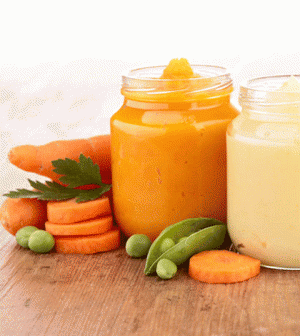- Finding Unshakable Power in a World That Wants to Pull Us ApartPosted 2 weeks ago
- What could a Donald Trump presidency mean for abortion rights?Posted 2 weeks ago
- Financial Empowerment: The Game-Changer for Women in Relationships and BeyondPosted 2 months ago
- Mental Health and Wellbeing Tips During and After PregnancyPosted 2 months ago
- Fall Renewal: Step outside your Comfort Zone & Experience Vibrant ChangePosted 2 months ago
- Women Entrepreneurs Need Support SystemsPosted 2 months ago
Contaminants in Baby Food and How to Avoid Them

By Gina-Marie Cheeseman | Naturallysavvy
How safe are baby food products? Clean Label Project (CLP) analyzed the ingredients in processed baby food products. The non-profit dedicated to educating consumers tested 628 products for 130 contaminants including heavy metals, pesticides, antibiotics and BPA. Only 20 percent of the products tested made the CPL Magnified List of safe foods.
“We are sharing recommendations based on tested and benchmarked data so that consumers can make informed choices about which are the purest food products on store shelves,” said Doug Porter, board chair of CLP, in a statement. “We want to help consumers see beyond the label so they can make more informed choices.”
The biggest takeaway from both the testing and the list is that no product is completely contaminant-free, but some are far worse than others. Researchers found the bottom 19 percent contain many more toxins than the top 19 percent. The top 19 percent contain more than six times the levels of lead, over 14 times the levels of arsenic, and almost six times more BPA concentration. A total of 80 percent of infant formulas and 60 percent of meat and dairy baby food jars tested contained detectable antibiotic residues. Fifteen percent of all products tested exceeded the U.S. Food and Drug Administration and U.S. Environmental Protection Agency drinking water limit for arsenic, and some exceeded it by at least 20 times as much.
Organic baby food is not necessarily safer. While organic certification means that the food production process is evaluated and inspected, the finished product that babies eat is not. Organic-certified baby food is free of pesticides and genetically modified (GMO) ingredients, but may contain other contaminants. CLP researchers found heavy metal impurities in both organic and non-organic products. However, a number of organic products made the Magnified List.
Read more about food contaminants
There are 119 baby food products that made the Magnified List. Those products meet standards established by CLP’s Medical Advisory Board. The tested products include formulas, cereals and snacks, jar meals, drinks, and pouches.
The best way that parents can protect their babies and toddlers is by printing the Magnified List and taking it with them to the grocery store or making their own baby food at home using organic produce and meat.
Editor’s Note: We recommend baby food pouches from our partner Happy Family, which are certified safe by the CPL Magnified List.






